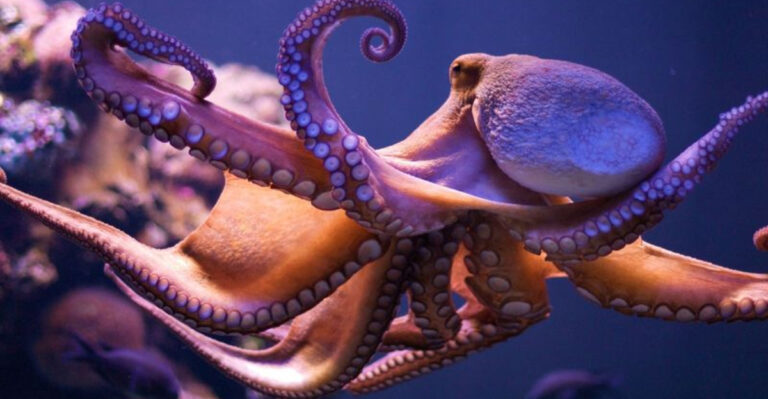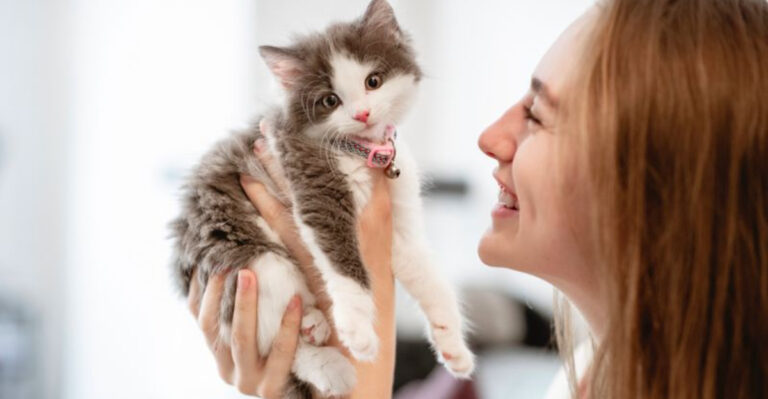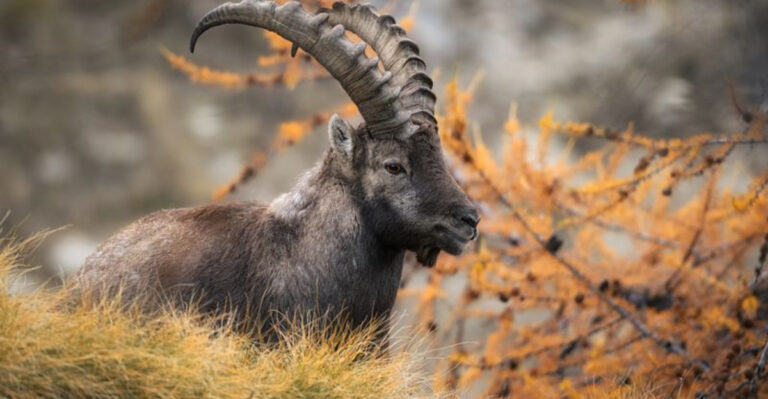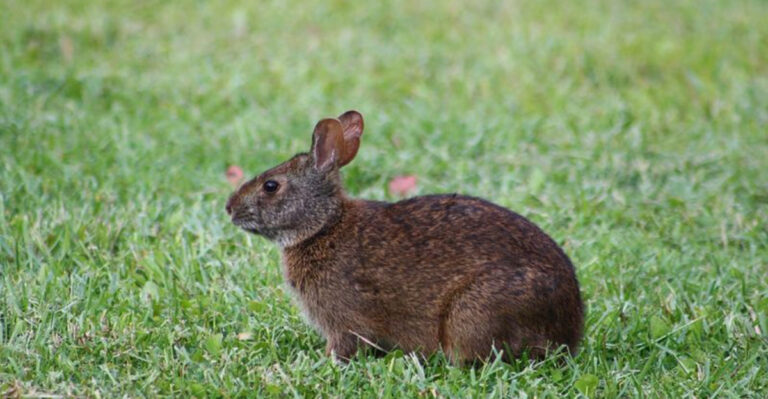13 Signs Us Humans May Have Actually Descended From Monkeys
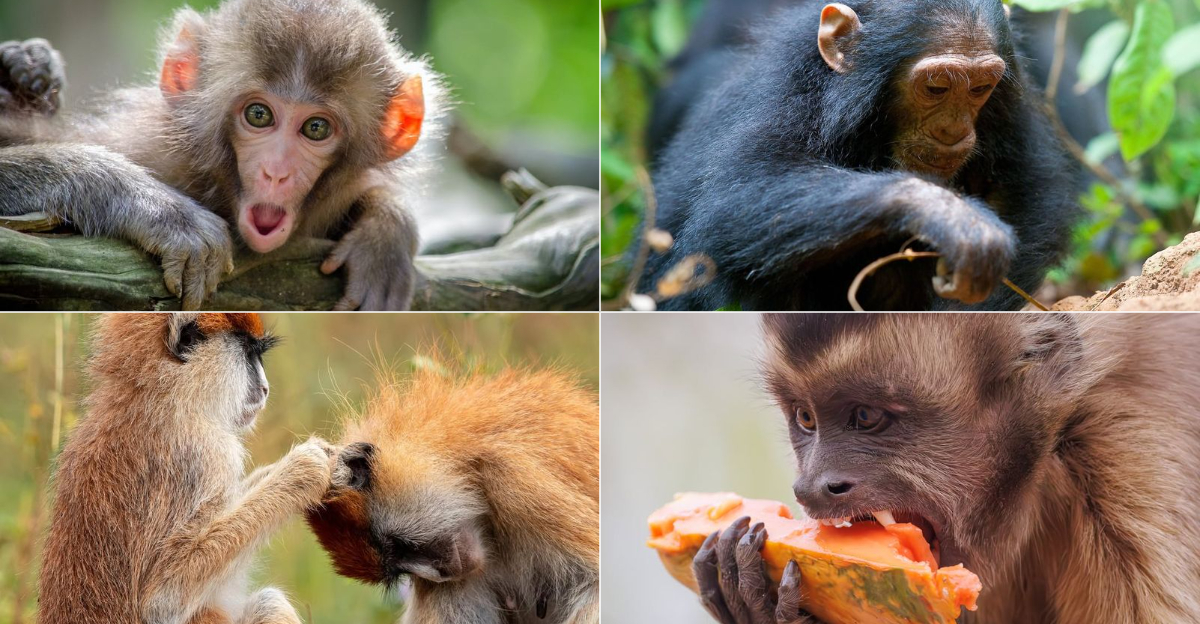
Human beings have long pondered the mysteries of their origins. From ancient myths to modern science, the quest to trace our lineage has been a journey filled with discovery and wonder.
Among the most captivating theories is the idea that we may share a common ancestry with monkeys. It’s an idea that evokes images of swinging through trees, chattering in the jungle, and perhaps a few bananas too many. But how much truth is there in this amusing notion?
Let’s embark on an exploration of these fascinating signs that suggest we might just be more closely related to our simian friends than we’d like to admit. Get ready for a swinging good time as we explore the quirks, traits, and behaviors that might just reveal our monkey business origins!
1. Opposable Thumbs
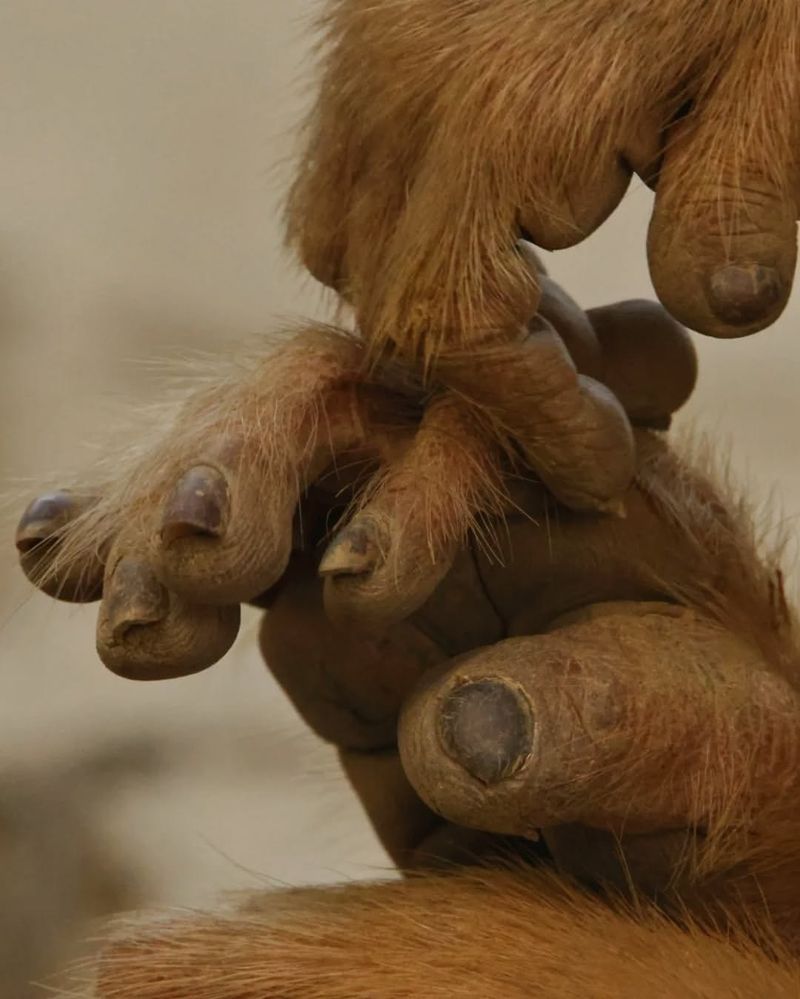
Picture this: you’re trying to open a stubborn jar of pickles, and suddenly you find yourself grateful for your opposable thumbs. These handy digits, which allow us to grasp, hold, and manipulate objects, are one of the most striking similarities we share with our simian counterparts.
While many animals have paws and claws, few possess the dexterity afforded by opposable thumbs. This trait enables both humans and monkeys to perform tasks that require intricate manipulation, like typing, tool-making, or even a simple handshake. It’s as if evolution handed us a grand gift, wrapped in the form of these versatile appendages.
Have you ever watched a monkey nimbly snatch a banana or swing from a tree with effortless grace? That’s opposable thumbs at work, contributing to their climbing prowess and foraging skills. In human terms, it translates to the ability to play musical instruments, create art, and text rapidly. Imagine a world without the thumb – no texting, no guitar solos, no high-fives. It’s a compelling argument that our thumbs might just be the unsung heroes of evolution, bridging the gap between us and our jungle kin.
2. Facial Expressions
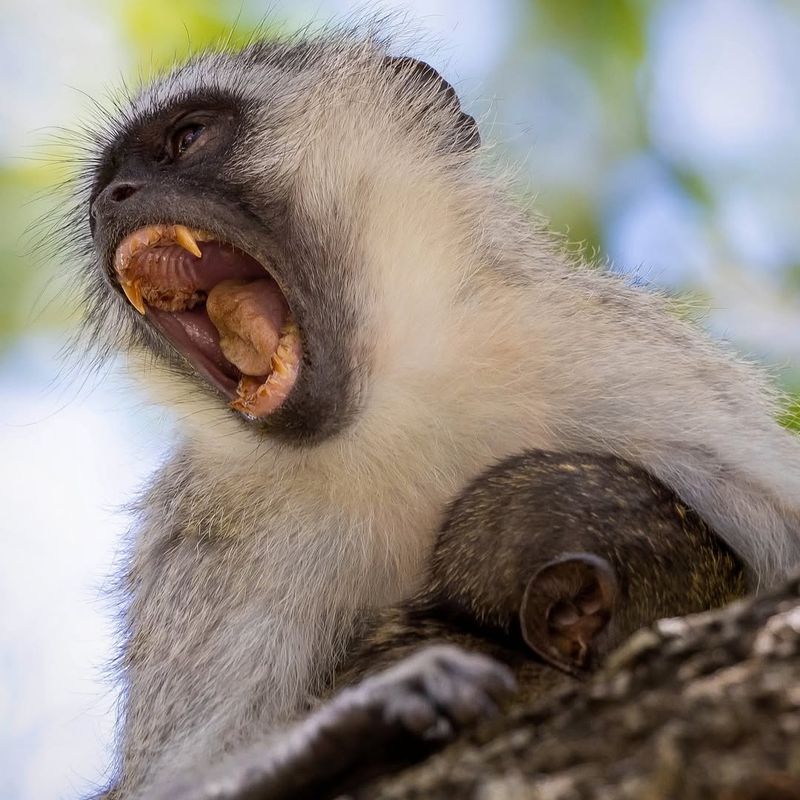
From cheeky grins to furrowed brows, their expressive faces mirror our own in uncanny ways. The ability to communicate through facial expressions is a key element of social interaction in both humans and monkeys. This shared trait allows us to empathize, connect, and sometimes even understand each other without uttering a single word.
Take a moment to think about the last time you raised an eyebrow or flashed a sly smile. These expressions are more than just muscle movements – they’re tools of communication that transcend language barriers. Our primate relatives use them in much the same way, navigating their social worlds with a nuanced visual vocabulary. From a mischievous glint in the eye to a show of teeth in excitement, these expressions are powerful indicators of emotions and intentions.
In a world where a picture paints a thousand words, our faces might just be the canvas that links us to our monkey ancestors. Next time you catch yourself in the mirror, remember there’s a bit of monkey magic in every smile and frown.
3. Social Structures
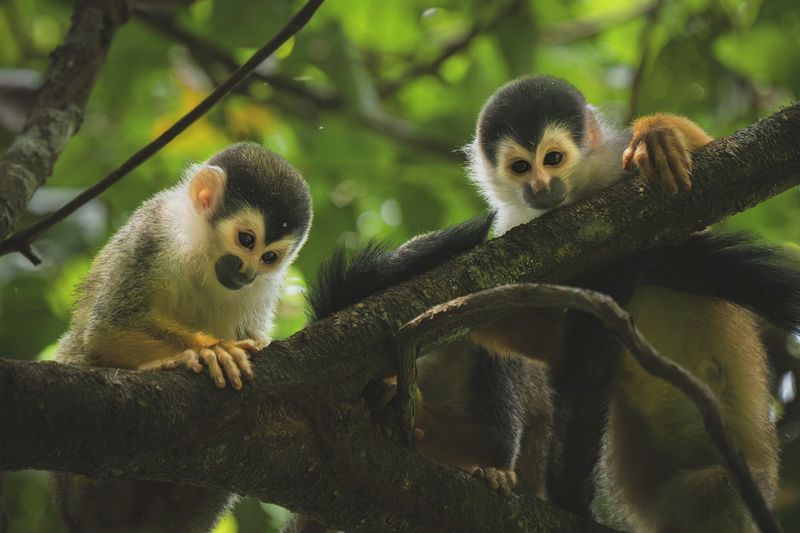
Humans and monkeys both thrive in complex social environments, relying on intricate social structures to navigate their worlds. Whether it’s a workplace meeting or a monkey troop huddling together for warmth, these social bonds play a crucial role in survival and success. In both species, individuals form alliances, establish hierarchies, and even engage in a bit of gossip now and then. It’s almost like primate politics, with a dash of social drama.
Think of how we humans gather for family dinners, celebrate milestones, or even just enjoy a coffee break with colleagues. These interactions are not so different from a group of monkeys grooming each other or sharing a meal. It’s all about connection, support, and understanding the pecking order. Such social dynamics foster cooperation and ensure that everyone knows their place within the group.
From the boardroom to the jungle canopy, our social lives are a testament to the intricate web of relationships that bind us together. These connections not only make life richer and more fulfilling but also highlight a shared legacy with our monkey kin.
4. Tool Use
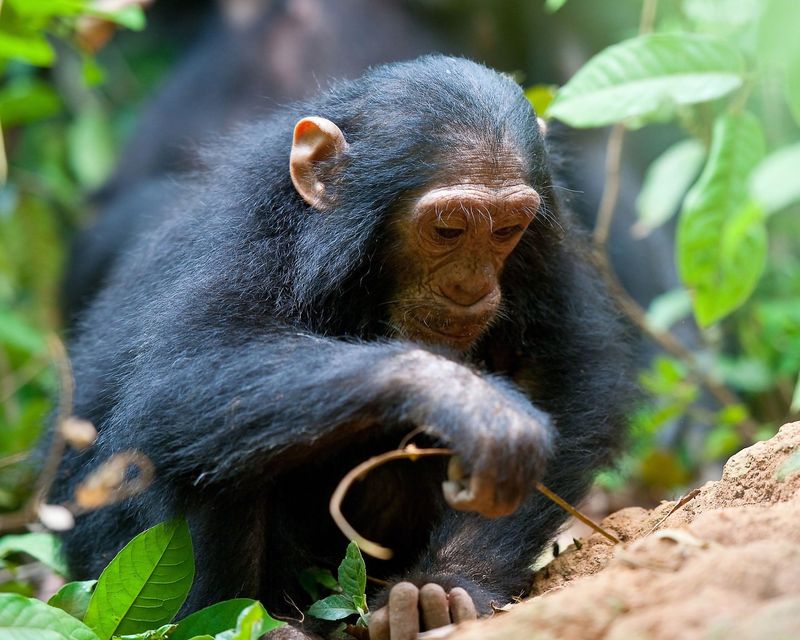
Hammer, wrench, screwdriver – tools of the trade for humans, right? But did you know that monkeys are tool aficionados too? Watching a monkey deftly use a stick to fish termites from a mound might make you question who’s been taking notes from whom. This impressive skill set showcases the cognitive abilities of both humans and monkeys, highlighting a shared ingenuity that transcends species.
Imagine a monkey, carefully selecting the perfect stick, just as you would choose the right screwdriver for the job. It’s a scene that underscores our shared ability to adapt and innovate. This knack for tool use isn’t just about survival; it’s a testament to the creativity and intelligence that characterizes both primates and people.
In a world driven by innovation and invention, it’s thrilling to think that our penchant for tool use might have a lineage that stretches back to the forests and trees. So next time you pick up a tool, remember you’re not just fixing a leaky faucet – you’re participating in a tradition that has been passed down through the ages, from monkey to human, one tool at a time.
5. Playfulness
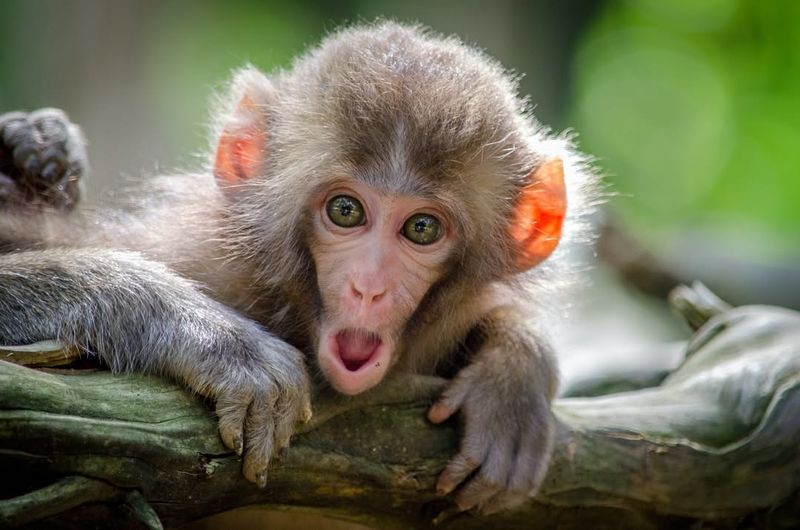
Who doesn’t love a good play session? Whether it’s children frolicking in a playground or monkeys swinging through the trees, playfulness is a delightful trait that humans and our primate relatives share. It’s more than just fun and games – it’s an essential part of learning, socialization, and development. The ability to play is a sign of intelligence and adaptability, and it’s a common thread that ties us to our monkey ancestors.
Think back to the last time you played a game, laughed with friends, or engaged in some playful banter. These moments are more than just enjoyable; they’re opportunities to hone skills, build relationships, and explore the world around us. Monkeys engage in similar playful antics, from chasing each other to mock fighting, all of which contribute to their growth and social cohesion.
In both humans and monkeys, play is a serious business with lifelong benefits. It’s a reminder that sometimes the most profound lessons come wrapped in laughter and joy. After all, life is a playground, and we’re all just swinging along.
6. Communication Skills
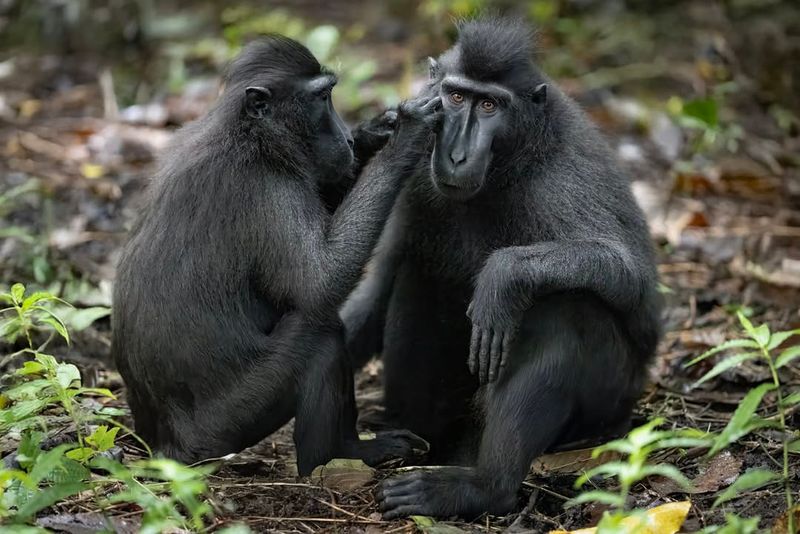
Communication is a cornerstone of human interaction, and guess what? Monkeys are quite the chatterboxes too! From vocalizations to gestures, our primate pals have developed a rich tapestry of communication skills that rival our own.
Consider the myriad ways humans express themselves – through speech, body language, and even emojis. Monkeys, too, have a diverse repertoire of sounds and signals, from the whooping calls of gibbons to the intricate social cues of chimpanzees. These communication skills are vital for navigating social landscapes, forming bonds, and resolving conflicts.
In a world where clear communication is key, our shared ability to convey thoughts and feelings underscores the deep-rooted connections between us and our primate relatives. Whether through words or whispers, we’re all part of a grand conversation that spans the ages, linking us to our monkey ancestors in ways that are both profound and playful.
7. Sense Of Humor
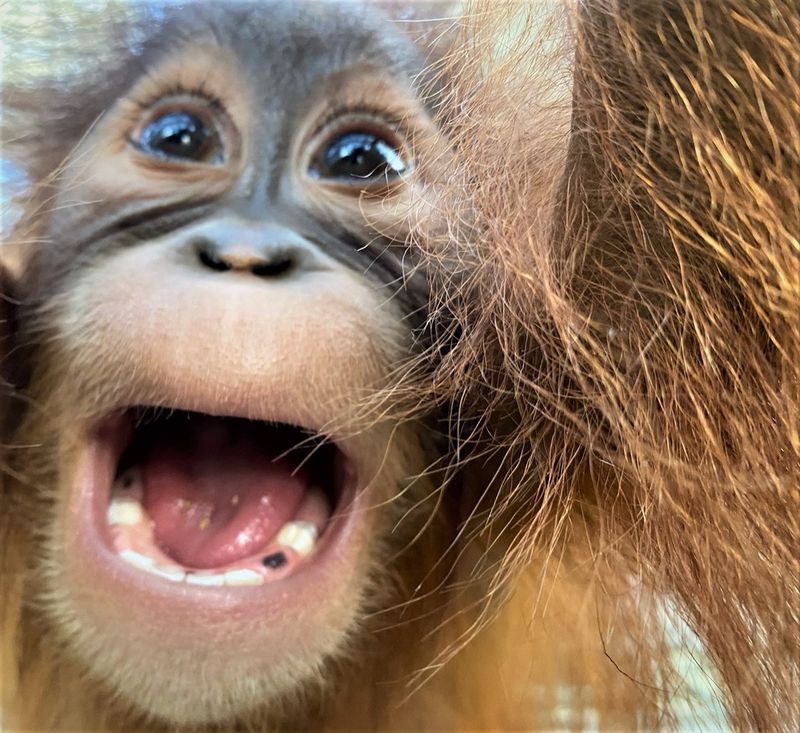
Humor is a universal language, and it turns out, monkeys are in on the joke. Our primate cousins often engage in playful antics and expressions that seem to mirror our own sense of fun.
Imagine watching a group of monkeys as they chase each other, play pranks, or simply make silly faces. These behaviors are more than just entertaining; they’re a form of social bonding and stress relief. Much like humans, monkeys use humor to strengthen relationships, diffuse tension, and create a sense of camaraderie among their peers.
In both human and monkey societies, laughter is the glue that holds us together. It’s a reminder that joy and mirth transcend species, linking us in a shared appreciation for the lighter side of life. After all, a world without laughter would be bananas!
8. Imitation Skills
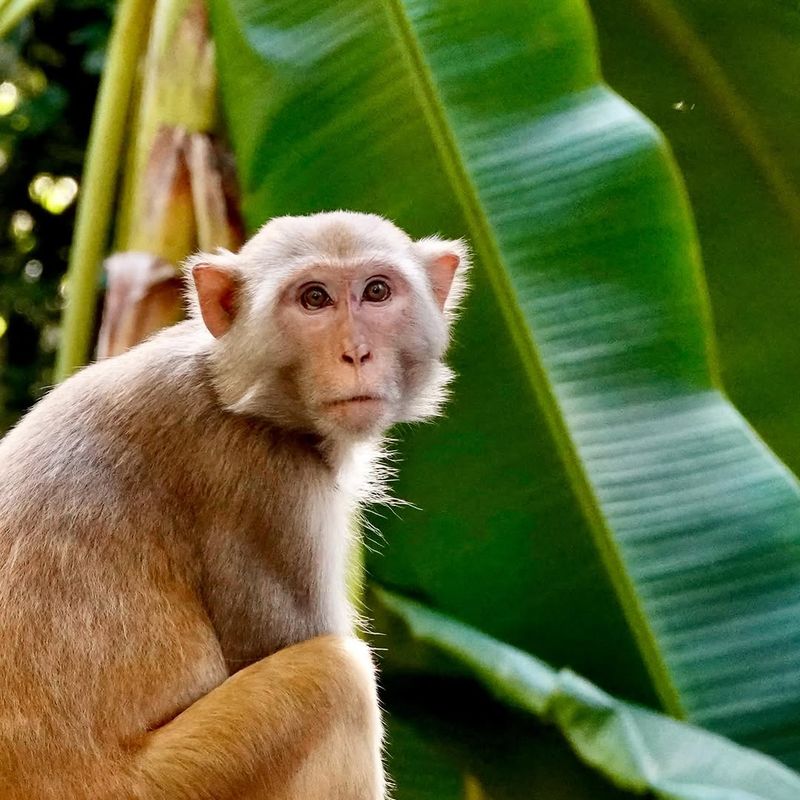
If you’ve ever watched a monkey mimic human actions, you might wonder if they’re secretly auditioning for a talent show. Imitation is a powerful learning tool, and both humans and monkeys excel at this art of mimicry.
Think of how children learn to speak, walk, and interact by observing and copying the actions of those around them. Monkeys, too, learn essential survival skills by imitating their peers and elders. From cracking nuts to using tools, imitation plays a vital role in the transmission of knowledge within primate communities.
The ability to imitate reflects cognitive flexibility and adaptability, traits that are essential for thriving in ever-changing environments. Whether it’s a human learning a new dance move or a monkey mastering a foraging technique, imitation fosters growth and innovation.
9. Family Bonds
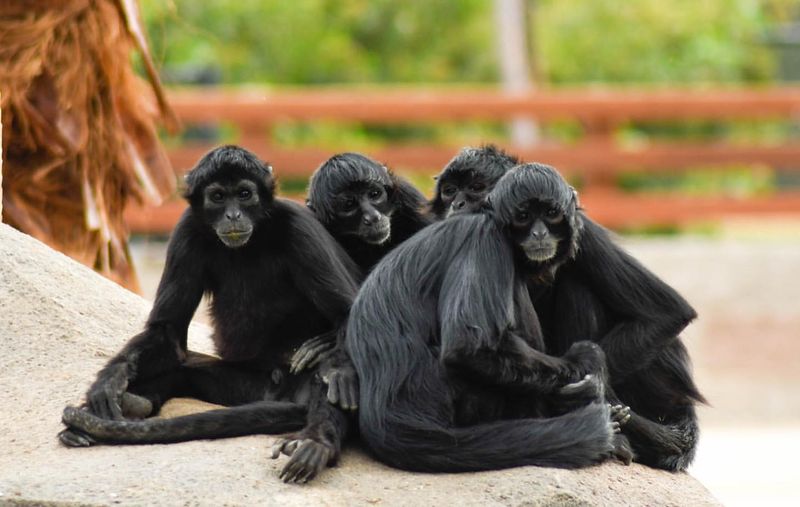
In both human and monkey societies, family bonds are the bedrock of social life. From nurturing the young to supporting the elderly, these connections are vital for survival and happiness. It’s a world where the ties that bind go beyond mere biology, creating complex networks of care and cooperation.
Consider the warmth of a family gathering, where generations come together to share stories, laughter, and love. Monkeys, too, form tight-knit family units, engaging in grooming, play, and protection of their kin. These family ties provide stability and ensure the continued success of the group.
In both species, the strength of family bonds is a reflection of our need for connection and belonging. It’s a reminder that at the heart of our evolutionary journey lies the simple yet profound truth that we’re all connected by the bonds of family. Whether human or monkey, family is the glue that holds us together, creating a tapestry of love and support that spans the ages.
10. Curiosity
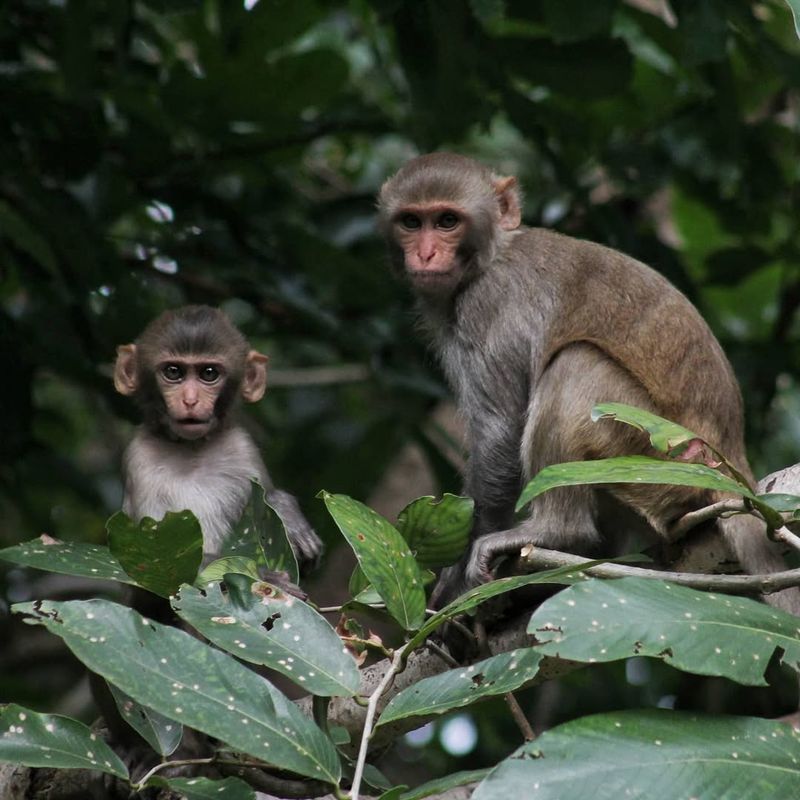
This insatiable thirst for knowledge and exploration is a trait that has driven innovation, discovery, and progress throughout history. It’s a shared characteristic that underscores our deep-rooted connection to our simian ancestors.
Monkeys exhibit a boundless curiosity, investigating new objects, environments, and potential food sources. This inquisitiveness is a driving force behind learning and adaptation, enabling both species to thrive in diverse settings.
In a world where curiosity leads to discovery, our shared sense of wonder highlights the adventurous spirit that connects us to our monkey kin. Whether it’s a scientist uncovering new truths or a monkey exploring a forest, curiosity is the spark that ignites the flames of knowledge and growth.
11. Grooming Rituals
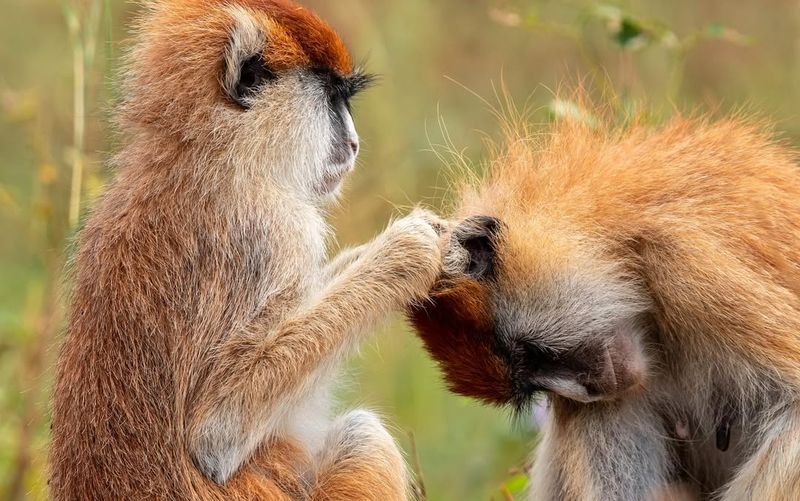
Humans and monkeys share a love for grooming, though for very different reasons. For us, a haircut or a spa day might be about self-care or fashion. For monkeys, it’s a social ritual that strengthens bonds and builds trust.
Imagine a troop of monkeys, sitting together, meticulously picking through each other’s fur. This grooming behavior is more than just hygiene; it’s a social activity that reinforces relationships within the group. Similarly, humans engage in grooming activities, from haircuts to massages, that foster connection and intimacy.
These rituals highlight a shared understanding of the importance of social bonds. Whether it’s a monkey tending to its troop or a human enjoying a relaxing spa day, grooming is a form of care and attention that transcends species. It’s a reminder of the small gestures that connect us to one another, creating a web of relationships that support and sustain us.
12. Problem-Solving Skills
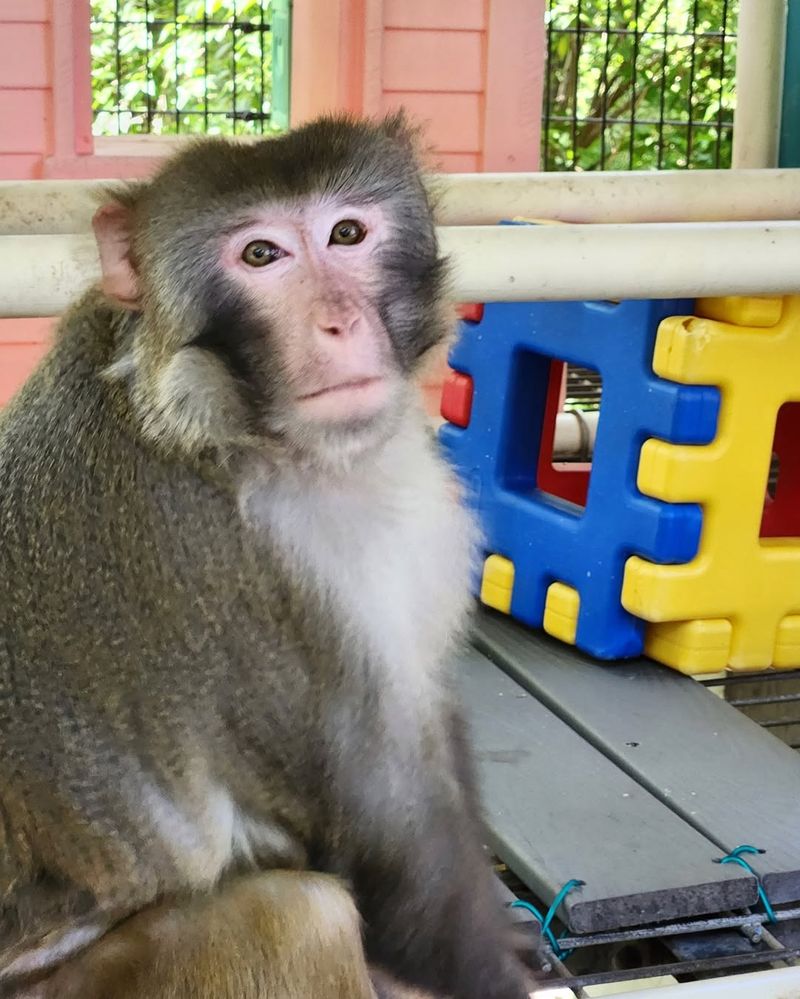
The ability to solve problems is a hallmark of intelligence, and both humans and monkeys excel in this area. Whether it’s a human tackling a crossword puzzle or a monkey figuring out how to access hidden food, problem-solving skills highlight our shared cognitive prowess.
Picture a monkey, carefully analyzing a puzzle box to retrieve a tasty treat. This behavior parallels human problem-solving, where logic, creativity, and perseverance come into play. Both species possess the ability to think critically, adapt to new challenges, and find innovative solutions.
In a world that often requires quick thinking and adaptability, our shared problem-solving skills underscore the evolutionary link between us and our primate cousins. These abilities not only enhance our survival but also enrich our lives with opportunities for growth and discovery.
13. Dietary Preferences
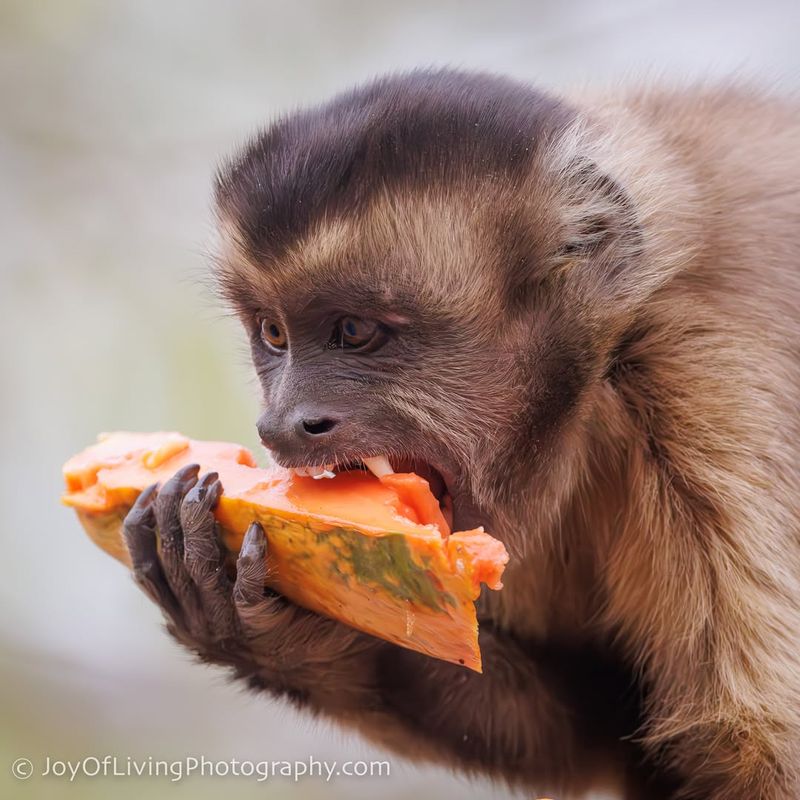
From bananas to berries, humans and monkeys share a fondness for fruits that transcends cultural and geographical boundaries. This shared dietary preference highlights a connection that goes beyond mere sustenance, reflecting our shared evolutionary history.
Imagine a monkey, savoring a juicy piece of fruit in the wild. This scene is mirrored in human societies, where fresh fruits are a staple in diets across the world. The enjoyment of fruits is not just about taste; it’s about nutrition and the health benefits that come with it.
In both species, a diet rich in fruits supports overall well-being, providing essential vitamins and nutrients. It’s a reminder that sometimes, the simplest pleasures are the ones that connect us most deeply. Whether it’s a monkey munching on a banana or a human enjoying a fruit salad, our shared love of fruits is a delicious link to our simian past.

